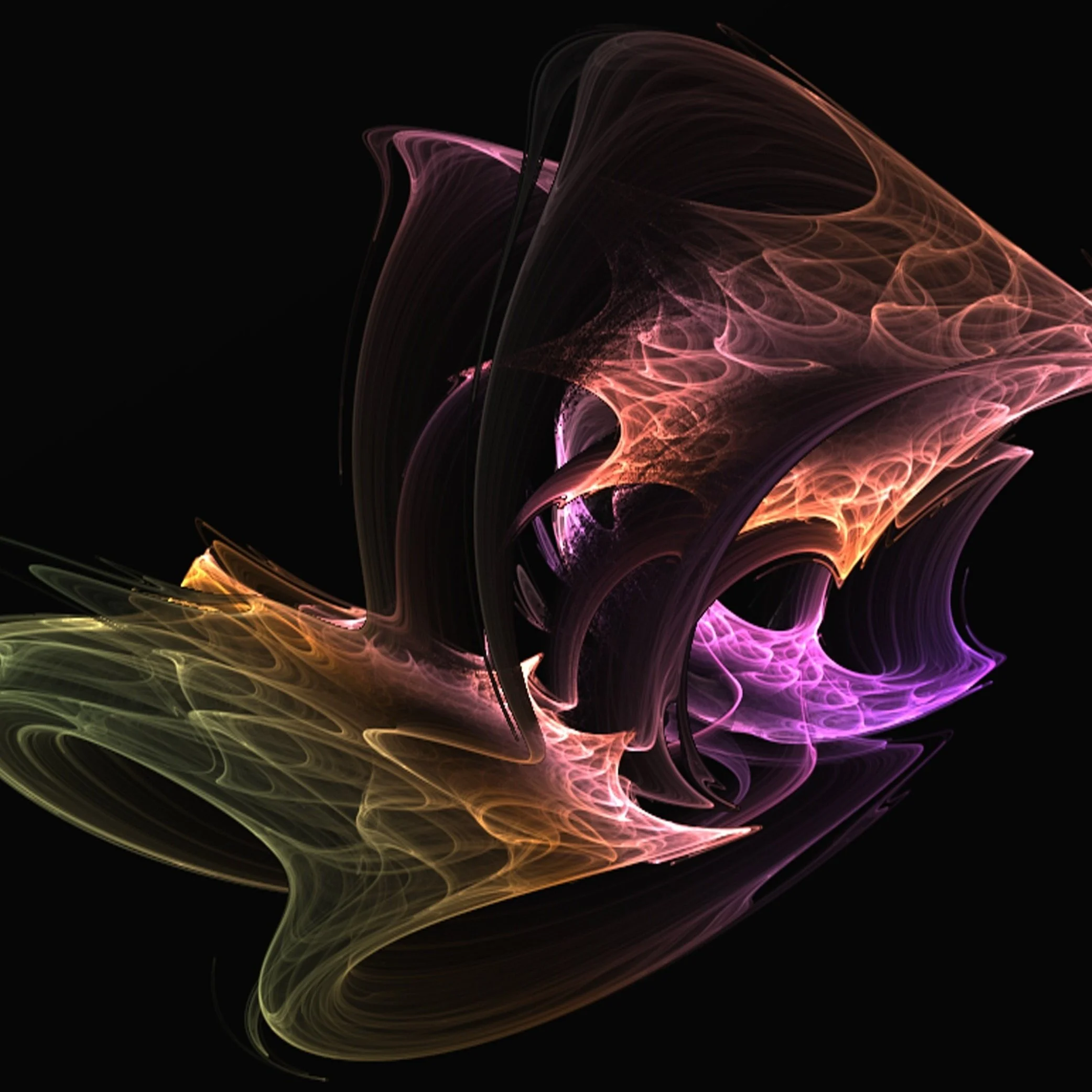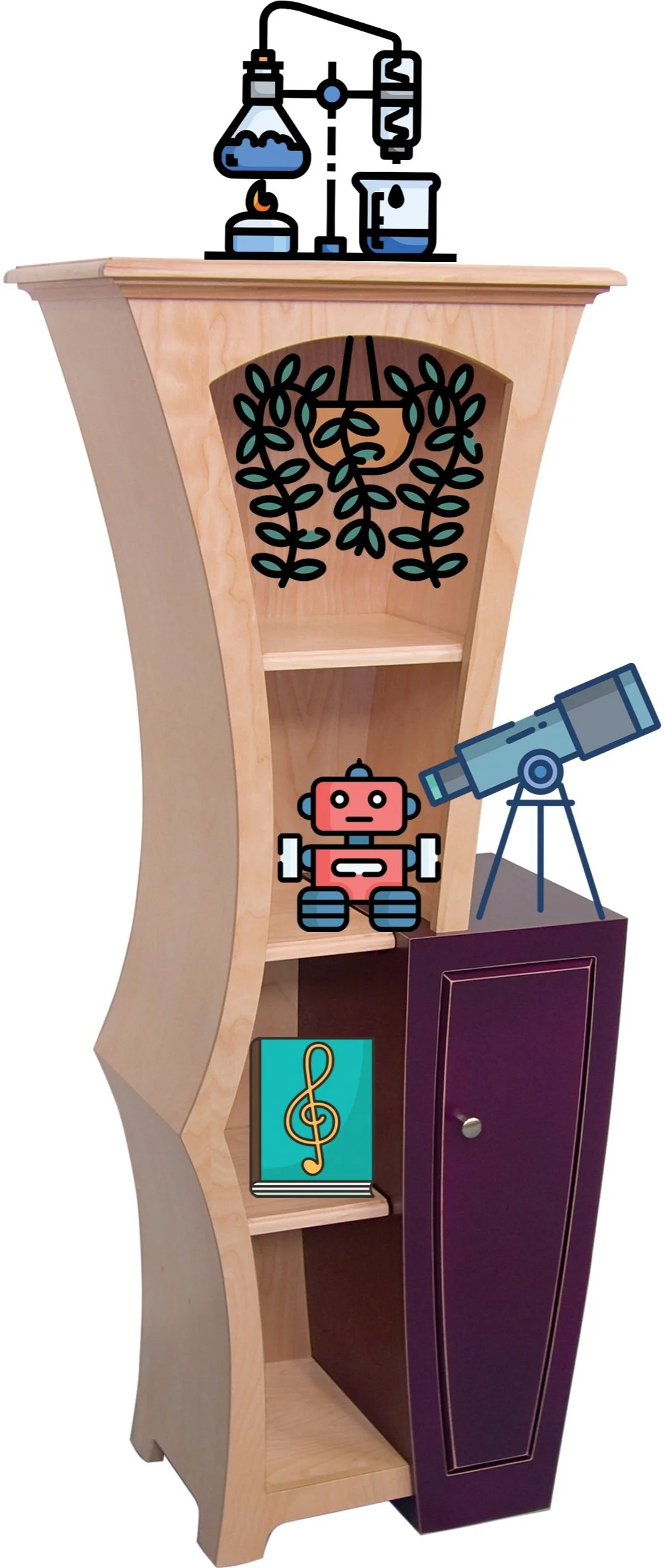Fiction-Science Pattern Mapping
It is a trite saying that “analogies cannot be pushed too far,” yet they may be
justifiably used to describe things for which our language has no words.
—Werner Heisenberg, The Physical Principles of the Quantum Theory
It may be that universal history is the history of a handful of metaphors.
—Jorge Luis Borges, Labyrinths
How do we communicate science phenomena such as time dilation and quantum superposition, processes that range from perplexing to entirely counterintuitive? We do so with a tool that is not an instrument like a microscope, nor a machine like a particle collider, but a rhetorical device: fictionality.
Fictionality opens the door to confounding natural phenomena through a process of fiction-science pattern mapping. To fi-sci*, distil a science phenomenon into a pattern (a form, or shape), and locate the avatar of this pattern in fiction. When a form in fiction is analogous to a form in science, we can reason about the latter in terms of the former.
Fi-sci pattern mapping suggests that our capacities to perceive strange and confounding scientific phenomena may turn on our experiences with fiction.
By leveraging fictionality as a cognitive resource, pattern mapping becomes the fi-sci framework. In addition to opening new avenues in narrative studies, fi-sci is conveyed into the classroom via jigsaw modules, innovating a curriculum that cultivates interdisciplinary fluency. Here’s how it works:
Instrument: Fictionality
Rhetoric is the art of using words as a means to an end—to inspire and convince; to provoke and beguile.
At times, the words we use are fictions: we invent something to get our audience to consider nonactual states or events, to imagine things that are not real.
Picture Adam and Anton, hiking in a redwood forest. Adam points to a tree and says, "Once the squirrels arrive at the top it'll just be a couple of hops to their fluffy cloud beds."
Adam is using fictionality as a means to an end: he invents a scenario to convey the tree's extraordinary height—and perhaps to make Anton smile at the absurdity of squirrels sleeping in clouds. In short, Adam uses fictionality rhetorically.
Fictionality is an instrument—a tool, a device—used for a particular purpose.
Cognitive Maneuver: Pattern Mapping
Identifying commonalities between two concepts entails recognizing they share a pattern.
Blood vessels, tree branches, and river deltas vary greatly in scale and function, but they have something in common: all three systems take an arborescent form.
Pattern recognition is also at play when we use the language of one discipline or domain to describe another. For example, we talk about recombinant DNA and genetic engineering with words that typically characterize linguistics and text, such as code, alphabet, phrase, editing, instructions, transcription, translation.
The wave is another reappearing pattern. Around 250 B.C.E., the philosopher Chrysippus considered the possibility that sound is a sort of wave. Two centuries later, the architect Vitruvius likened the way sound waves spread to the way ripples move on water. Soon, scientists made the leap from sound to light, and concepts like interference, refraction, transverse, and wavelength could be used to describe a pattern across three media.
Pattern mapping involves recognizing that disparate phenomena correspond in form or structure.
Framework: Fi-Sci
Thought is a function of analogy. Faced with a novel concept, we reason about it by comparing it to something already familiar. In order to conceptualize our world, we map patterns from one domain onto another.
Let’s borrow language from the domain of fiction to elucidate patterns in the domain of science.
Astrobiologists do this when they refer to a circumstellar habitable area as the Goldilocks Zone. It works because the science and the fairy tale share a pattern: they both describe conditions that are “just right.”
When a concept in fiction is thus analogous to—that is, shares a pattern with—a concept in science, we can leverage the former to reflect upon the latter.
Visit the Fi-Sci Gallery to see an example of a fi-sci analogy at the intersection of interactive fiction and genetics.
Drawing on fiction to reason about a similarly shaped phenomenon in science is fiction→science (or, fi-sci) pattern mapping.
Vehicle: Jigsaw Module
The jigsaw module (JM) is a portable, stand-alone set of lessons that can be slotted among the other modules of an existing course—like a puzzle piece. The subject of each JM is a particular fi-sci analogy whereby a pattern in a work of fiction is mapped onto a science process or phenomenon.
JMs function as adaptable templates that every instructor can adjust and rearrange per a course's requirements and modality, and scale to cover less or more time.
Though customizable, the JMs are bookended by three features that are identical across all such modules:
A standard module launch pad (home page) that includes a brief introduction to fi-sci pattern mapping and two student learning outcomes, which align with two assignments:
First, a reflection on a common prompt that all students complete at the module’s conclusion, and
Second, an activity for which each student develops an original fi-sci analogy.
JMs are collected in an open education resource (OER) digital library. This repository is a crowdsourced (or, facultysourced), living collection of course components available to instructors across disciplines. Once an instructor selects a module they wish to adopt, the fully-formed yet customizable JM is exported into the host course.
Jigsaw modules are "plug-and-play," configurable teaching units that convey fi-sci pattern mapping into courses across the curriculum.
New Avenues in Narrative Studies
The claim that fiction can illuminate science ascribes to fiction a remarkable power. This power is described with a rhetorical approach to fictionality, which “entails assuming that it is a means to an end” (Nielsen et al. 63). The rhetorical approach views generic fictions such as the novel, the short story, and the fiction film as subsets of a larger mode of fictive discourse, which James Phelan characterizes as “intentionally communicated invention, projection, or other means of directing an audience to consider nonactual states or events” (Gammelgaard et al. 7).
The fiction part of fi-sci pattern mapping functions as a means to direct an audience to consider nonactual states or events specifically for the purpose of enhancing their comprehension of scientific concepts. With this framework, fi-sci pattern mapping adds to narratologists’ examination of what “rhetorical theorizing about fictionality can do for our understanding of literature” (Gammelgaard et al. 2), an exploration of what rhetorical theorizing about fictionality can do for our understanding of science.
The fi-sci method of using fiction to access science may seem similar to but is actually distinct from the ways fiction has typically been used to clarify or teach science. The prevailing uses focus on two types of narrative: science fiction, long wielded as a vehicle for envisioning alternate worlds and futures, like Edwin Abbott Abbott’s Flatland (1884), Octavia Butler’s Dawn (1987), and Margaret Atwood’s Oryx and Crake (2003), and fiction that does not present as science fiction, but that still explicitly deals with or references science, like Jeanette Winterson’s Gut Symmetries (1997) and Richard Powers’ Orfeo (2014). These uses depend on the overt, because the connections between fiction and science are right there in plain sight. Fi-sci, on the other hand, turns on latency: the potential for a connection is present in the narrative, but must be excavated with pattern mapping.
Access to science phenomena turns on the same mechanism that grants access to all concepts: analogy. The fi-sci framework’s move is to posit science as the target domain and fiction as the source domain. Here, fictionality is conceived as an instrument, and pattern mapping is the cognitive resource through which we wield it.
References:
Gammelgaard, Lasse R., et al. Fictionality in Literature: Core Concepts Revisited. Ohio State UP, 2022.
Nielsen, Henrik Skov, et al. “Ten Theses about Fictionality.” Narrative, vol. 23, no. 1, 2015, pp. 61-73.
Curricular Innovation
Since its inception in 2021, the Science & Fiction Lab has organized three professional development institutes during which faculty fellows worked in interdisciplinary duos to design jigsaw modules. The topic of each JM would correspond to the expertise of the faculty that develop it.
Duos began by deriving a fi-sci analogy that links both professors' specializations. Fi-sci pairings developed across the three institutes include:
History + computing and information sciences
Religious studies + astronomy
Portuguese literature + cellular biology
Network aesthetics + network science
Italian literature + biophysics
Disability studies + engineering
Then, duos would build jigsaw modules around their fi-sci analogies, consisting of learning outcomes, recommendations for assignments, and suggestions for outcome assessment.
Fellows individually implemented their JMs into their own courses, and also contributed them to the open-access digital library so that they would be available for other faculty to adapt and adopt.
Visit the Fi-Sci Gallery and scroll down to the last section to peruse fi-sci curricula developed by faculty fellows.
Science Communication
Multiliteracy
Perspective-taking
Contextualization
Abstraction
Creativity
Translation
Integrative Thinking
*Hat tip to James Phelan for proposing the term ‘fi-sci’ to characterize this framework.





